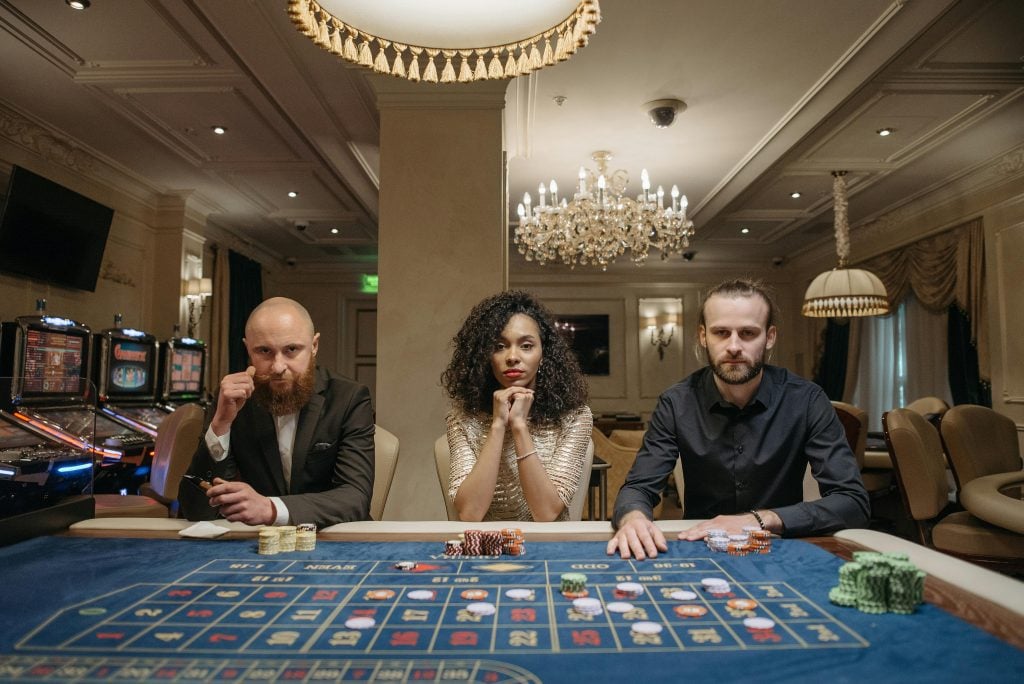How a dusty 19th-century card game became a global online sensation and why geeks everywhere are shuffling in.
If you’ve ever stayed up too late watching people bluff their way through million-dollar pots on TV or found yourself knee-deep in a digital Texas Hold’em match, you’re part of a story that stretches back nearly 200 years. Poker isn’t just a card game, it’s a cultural shapeshifter. It’s gone from smoky saloons and Mississippi riverboats to neon-lit Vegas casinos, and finally to your laptop or smartphone screen.
Poker in the modern era is as much a game of psychology, statistics and cyber wizardry as it is a game of guts and luck. It’s a game that fascinates the same kind of brain that’s hooked on strategy games, computer puzzles and Byzantine fantasy lore. Geek culture enthusiasts are addicted to poker’s combination of smarts, brashness and storytelling thrill, all wrapped up in a 52-card deck.
Free poker and the virtual table experience
Nowadays, you don’t even have to risk real money to get into the action. New software allows free poker tournaments where players can experience the thrill of tournament play without losing a single cent. You can sit at virtual tables, play computer versions of the WSOP and put your brains against players from distant regions of the world, all from the comfort of your own home.
This accessibility has opened the doors to new generations of players. It’s not just about winning money anymore; it’s about mastering the craft, understanding the odds and enjoying the camaraderie of online communities. The virtual poker scene has that same geeky spirit you’d find in an MMO guild or a tabletop gaming circle; strategy, storytelling and a dash of friendly competition. But that is not how things started…
The humble beginnings contained riverboats, cards and cunning
The origins of poker are a bit murky, like a hand you’d rather keep close to your chest. Most historians trace it back to the early 1800s, when French settlers brought a game called “poque” to New Orleans. This game blended elements of bluffing, betting and card rankings, and when it hit the Mississippi River trade routes, it started to mutate. By the time it spread up and down the river on paddle boats, “poque” had become “poker.”
Early poker was simple. A 20-card deck was used and four people would bet on whose hand was highest. As the game migrated west, it evolved; Americans added a full 52-card deck, created the flush and later the draw mechanism (where players can swap cards to improve their hand). Poker settled in to remain in the American West’s frontier saloons during the mid-19th century.
Picture this: Cowboys, miners and outlaws bent over splintered tables, cigar smoke heavy in the air and someone yelling someone else a cheater every five minutes. It wasn’t exactly our flashy world of televised poker today, but the game itself, that intoxicating mix of chance and calculation, was there in full.
The casino boom with Vegas lights and televised poker dreams
Cut forward a few decades to the gaudy postwar Las Vegas. Casinos had made poker a mainstay from a backroom activity. The golden age of poker had begun in the 1970s, courtesy of one man: Benny Binion. He created the World Series of Poker (WSOP) in 1970 in his Horseshoe Casino, inviting the world’s best players to compete against one another for notoriety and cash.
The WSOP was revolutionary. It invented tournament play by the book and established poker as an event sport decades before eSports. The poker legends like Doyle Brunson and Johnny Moss scowling down over their opponents became an overused stereotype. The game was a mix of mathematics and myth; half cowboy shootout, half battle of brains over generations.
But it wasn’t until late in the 1990s and early 2000s that poker truly went mainstream. When poker came to television, especially when the “hole cam” (a small camera showing players’ hidden cards) was incorporated, each viewer became a virtual player. Suddenly, everyone believed they could recognize a bluff and chase the jackpot.
The digital revolution led to a migration from green felt to green screens
Then came the internet and along with it a poker revolution on a whole new level. Around 1998, the initial online poker rooms began to appear. Now players could compete against live players from their homes and soon enough, online poker rooms started offering tournaments mimicking live casino settings.
It was heaven for the geek community. Online poker combined strategy, chance, numbers crunching and psychology, all in a digital setting that rewarded those adept at seeing patterns and those individuals. The mechanics of the game became more defined, with software tracking stats, win percentages and betting patterns. If you’ve ever built a spreadsheet to track your Magic: The Gathering collection or simulated D&D dice rolls, it’s easy to see why poker’s digital side appealed to the same brainy instincts.
Chris Moneymaker’s 2003 WSOP Main Event win, a normal dude who qualified online at an online poker site, sparked the global poker boom. Overnight, millions of people realized they could make the leap from playing in their lap at home to competing for millions in Sin City. The “Moneymaker Effect,” as it would come to be known, proved that poker was no longer the exclusive preserve of pros; it was accessible to anyone with Wi-Fi and a dream.
Poker today is where strategy meets technology
Today, in the 2020s, poker continues to evolve. Artificial intelligence has finally arrived, literally; AI software like Libratus and Pluribus have beaten several of the world’s best players at heads-up showdowns, pushing the boundaries of what is possible in human-vs-machine strategy.
Many online players nowadays use data-driven training platforms and advanced analytics in an effort to fine-tune their playing, turning what used to be a gamblers’ game into something more akin to a science.




![‘Silent Night, Deadly Night’ Review – Slasher Remake Embraces Its Roots While Carving It’s Own Path [Fantastic Fest 2025] ‘Silent Night, Deadly Night’ Review – Slasher Remake Embraces Its Roots While Carving It’s Own Path [Fantastic Fest 2025]](https://cdn.geekvibesnation.com/wp-media-folder-geek-vibes-nation/wp-content/uploads/2025/10/Silent_Night_Deadly_Night_2025-450x253.jpg)
![‘Good Luck, Have Fun, Don’t Die!’ Review – Sam Rockwell Brings Humor & Humanity To Sharp Sci-Fi Satire [Fantastic Fest 2025] ‘Good Luck, Have Fun, Don’t Die!’ Review – Sam Rockwell Brings Humor & Humanity To Sharp Sci-Fi Satire [Fantastic Fest 2025]](https://cdn.geekvibesnation.com/wp-media-folder-geek-vibes-nation/wp-content/uploads/2025/10/GOOD-LUCK-HAVE-FUN-DONT-DIE_Still-1-300x157.jpg)

